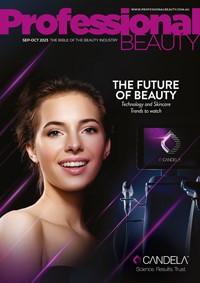Honey has been used for centuries to treat topical infections and skin disorders, and now modern science is discovering a more cosmetic application for the sweet liquid.

Professional Beauty's Lauren Carter spoke with Dr. Ralf Schlothauer, chief technical officer for Comvita Ltd, about the unique properties of Manuka honey and its vast potential in modern skincare.
Q. In the medical arena, Manuka honey has been used for years as an antimicrobial agent. Why is Manuka honey so effective in treating skin disorders and infections?
A. Honeys of various floral origins have been used throughout history for wound care. This is because honeys have a high sugar content combined with a low water content, which inhibits bacterial growth. Honey also has a low pH which facilitates wound healing and hydrogen peroxide, an antiseptic, is produced naturally when honey is diluted with wound fluid.
More recently, Manuka honey has been proven to have benefits over and above regular honey varieties. Research has shown that certain types of Manuka honey have antibacterial components that are much more effective at killing bacteria than regular honeys. Manuka honey has unique antimicrobial and wound healing properties.
In Australia, a clinical trial is currently being conducted through the Australasian Kidney Trials Network to test the effectiveness of Medical Grade Manuka Honey (Medihoney™ Wound Gel) in preventing common skin bacteria from causing infections in patients with kidney failure.
Not all Manuka honey is the same. It is important to know where the honey has been sourced from and how it has been treated in the manufacturing process and environment.
It provides a moist, wound healing environment, protects the wound by creating an antibacterial barrier against bacteria including antibiotic resistant strains, removes malodour and cleans the wound, removing slough and debris.
Its medical uses and applications are for leg and foot ulcers, pressure ulcers, infected wounds, sloughy wounds, necrotic wounds, malodorous wounds, surgical wounds, diabetic wounds, donor and recipient graft sites, burns, superficial wounds (such as cuts and scratches), sinus wounds and deep wounds.
Q. Are there different types of Manuka honey? Where are the purest varieties sourced from?
A. Dr. Schlothauer: Yes, there are different Leptospermum sub-varieties of Manuka honey and they vary in polyphenolic content and antimicrobial strength. In New Zealand the purest varieties are from Northland, East Cape and the Central North Island.
Q. How do Manuka honey-based skincare products function in terms of anti-ageing and age prevention?
A. Dr. Schlothauer: Evidence supports that Manuka honey concentrate, and specifically the HUNI® XA™ formula developed by Comvita, works by inhibiting the activity of a group of enzymes called MMPs (matrix metalloproteinases) which together, are capable of degrading collagen in the skin. We know that skin ageing is caused by both chronological ageing, which is unpreventable, and photo ageing which is sun induced. The primary environmental factor that causes photo ageing is UV radiation from the sun. Upon exposure to sunlight, the activity of MMPs is up-regulated. This leads to the loss of collagen. Collagen is a critical provider of strength and resilience to the skin, so when it breaks down, skin loses its firmness and wrinkles are formed. Ongoing research indicates that plant derived phenolic compounds, such as those found in enriched levels in Manuka honey, have been shown to inhibit MMPs activity, i.e., they slow the signs of ageing.
Q. Manuka honey-based beauty products are proving popular overseas, but have yet to truly take off in Australia. Do you predict that the trend will soon become visible in the Australian beauty market?
A. Dr. Schlothauer: Overseas markets are seeing this trend – particularly in the UK, Hong Kong, Taiwan, Korea and Japan and Australia – and there are an increased number of Manuka-based products being released in these markets. Through social media we can also see the following of and recommendations by consumers. We believe that Australia will also trend in this manner.
Q. How is Manuka honey harvested for use in skincare products?
A. Dr. Schlothauer: The honey used in Comvita’s HUNI®XA™ range is collected from beehives in remote locations in the northern part of New Zealand then incorporated into our skincare products. Our products are efficacious not only because of the percentage of Manuka honey that we use but because evidence supports that it works by inhibiting the activity of MMPs.
Contact: Comvita Skincare 1800 466 392.

